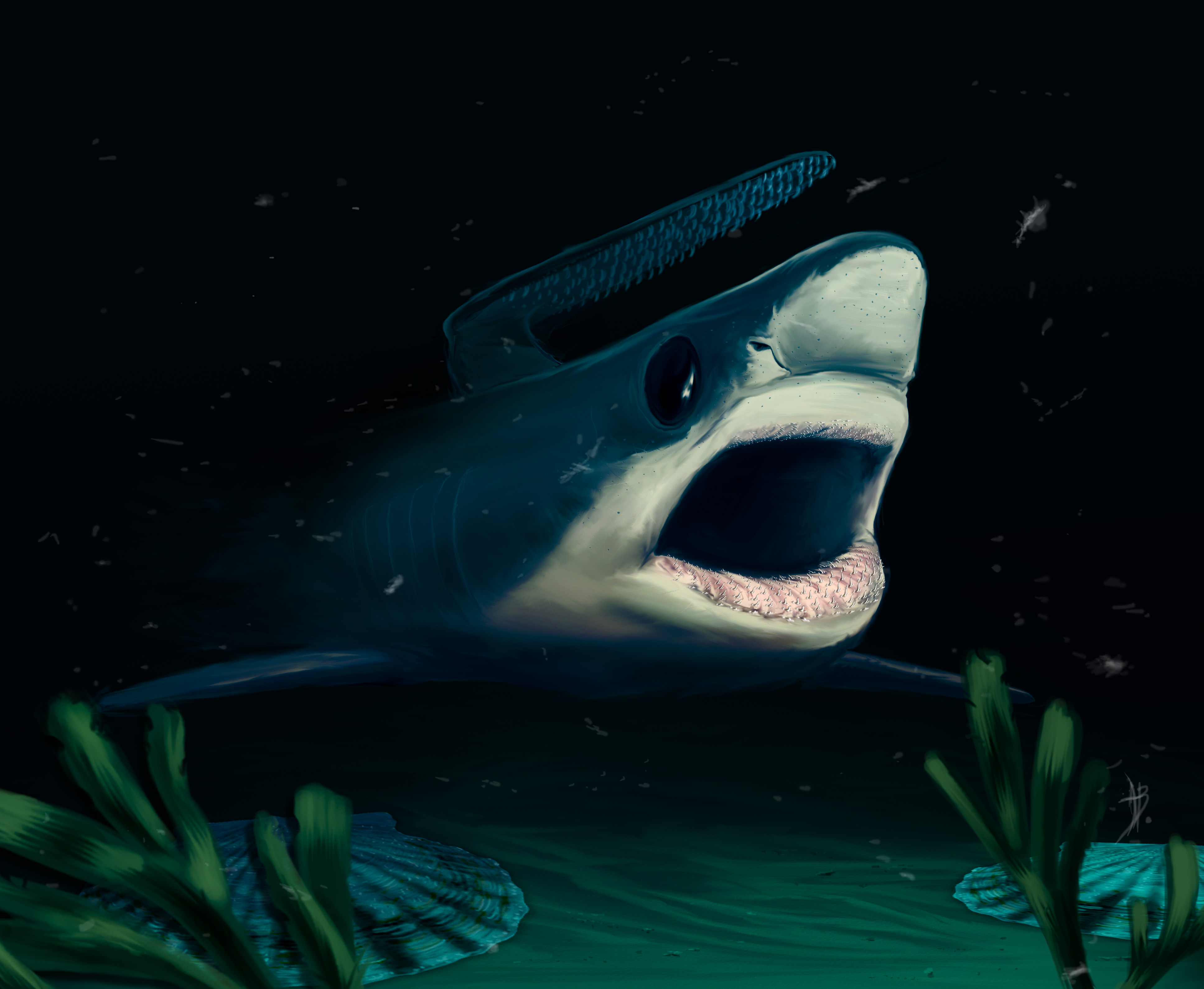Please note: Osher Rainforest will be closed for maintenance Jan. 14–16.
Science News
Shark Survivors
October 30, 2013
by Molly Michelson

How do you survive a mass extinction event? According to new research, swimming to deep areas of the ocean might help.
The end-Permian mass extinction, or “Great Dying,” is the largest extinction event in Earth’s history. It occurred long before the extinction event that wiped out the dinosaurs 65 million years ago. While the Great Dying might sound like a musical number from a Mel Brooks film, it's no laughing matter. Around 250 million years ago, this mass extinction event wiped out around 70% of terrestrial vertebrates and over 90% of all marine species, including many cartilaginous fishes.
While ancient sharks date back around 420 million years ago, many scientists believe that the mass extinction made way for modern sharks, which began appearing only around 100 million years ago.
According to the ReefQuest Centre for Shark Research:
One would expect ancient and modern sharks to share certain structural features: jaws, replaceable teeth, tooth-like scales, paired fins, internal fertilization, and a cartilaginous skeleton. It is these characteristics that define them as sharks. But, even in their earliest days, these animals developed some remarkable variations on the basic sharky theme.
The variations include different jaw and snout structure, smaller braincase size, backbone and fin shape and, of course, teeth differences. Ancient sharks had smooth, multi-cusped teeth, while most modern sharks have serrated, single-cusped teeth.
It appears some ancient sharks survived the Great Dying. European researchers discovered ancient cladodontomorph (“cladodont” means branch-toothed—think multi-cusped) shark fossils, including several fossil teeth, in a deep-sea platform in Southern France. Cladodontomorphs date back 350 million years, but the fossils are only 140-133 million years old.
The researchers propose that these now-extinct sharks survived the Permian-Triassic transition in deep-sea refuges during catastrophic events, and suggest that these findings illustrate how deep-sea fossils contain valuable information about the evolutionary history of ancient fishes.
The study is published this week in Nature Communications.
Image: Alain Beneteau 2013